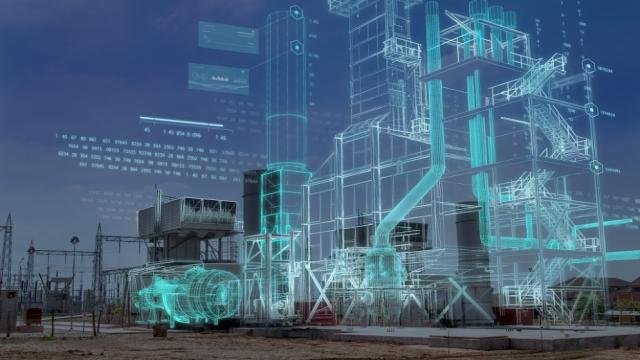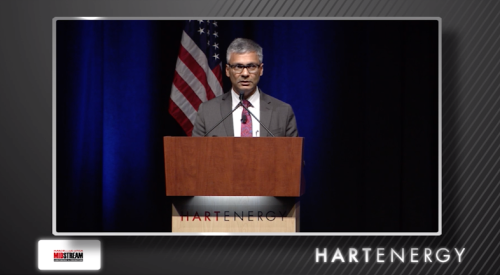
Photo courtesy of Siemens.
PITTSBURGH—The midstream sector faces significant challenges now, and the profitable response to some of those issues must include adopting new technology.
That was the message of Sanjeev Daruka, head of midstream development for Siemens Oil & Gas in a keynote address Dec. 4 at the 10th annual Marcellus-Utica Midstream Conference & Exhibition.
“We need to focus on longer-term operational excellence,” Daruka told attendees at the Hart Energy event. “The time for building and quickly flipping assets is gone, we have to hold the assets. In other words, operating expense is very important, it’s as important as capital expense.
“How do we get the costs out and make ourselves more profitable? How do we get more reliable equipment out in the field so we don’t have to worry as much about personnel costs? To me, technology can make it possible.
“If you want to stay competitive, you need to think about lower capex, lower land space, as well as lower maintenance obligations,” and those steps depend on rapidly advancing technology, he added.
Commodity prices won’t stay low forever, he said, and action now will enable the midstream to enjoy greater profitability when natural gas and crude oil returns become more favorable.
Centrifugal compression, Daruka said, is one important technology that can significantly lower costs as it increases reliability. Centrifugal compressors enable midstream operators “to deliver more with less” in comparison to industry-standard reciprocating compressors.
He said centrifugal compressors can reduce capital expenditures for a new natural gas processing plant by 20% to 30%, then reduce operating costs when a plant goes onstream due to lower maintenance expenses. Also, gas turbines typically can reduce permitting time and expense because of lower air emissions.
Midstream operators already are moving toward larger plants that offer lower unit costs, he said. An industry standard for plants with a capacity of around 60 million cubic feet per day (MMcf/d) has migrated toward a 200 MMcf/d standard, and 300 MMcf/d plants also have become more common. However, midstream firms can’t make such cost-lowering commitments without accurate production forecasts from their upstream customers.
And often, oil and gas producers can’t provide such projections.
“We need to get upstream and midstream on the same page to achieve these economies of scale,” Daruka said. Producers must provide accurate numbers to their midstream service providers to gain the cost reductions they want.

FULL PRESENTATION: Click here to view presentatIon by Sanjeev Daruka, head of business development for Siemens Midstream Oil & Gas, at Marcellus-Utica Midstream Conference & Exhibition.
Personnel costs are a signifcant concern, he said, as a substantial number of midstream veterans retire—and replacing those veterans with new employees has proved difficult.
“Where will they come from?” he asked. “The new generation is opting for very different careers. They are opting for technology jobs… are we planning for that? If not, we need to.”
That interest in technology plays into a potential strength for the sector if operators embrace the trend, Daruka emphasized.
Technology, in particular remote operation, will allow midstream firms to reduce personnel costs, but there are capital costs involved.
“The [remote] sensors are not cheap, but computing power is very cheap. Transmitting the signal to the control room—the bandwidth—is also cheap. The whole digital world is becoming affordable,” he added. And it’s important to remember tremendous computing power allows thorough analysis of operating data “so we can fix problems in time” and avoid unplanned outages.
Daruka closed with a traditional, but not surprising, safety message.
“My safety moment is to embrace technology,” he said. In doing so, the midstream will be able to meet many of the challenges it faces as the energy industry evolves through greater reliability and lower costs.
